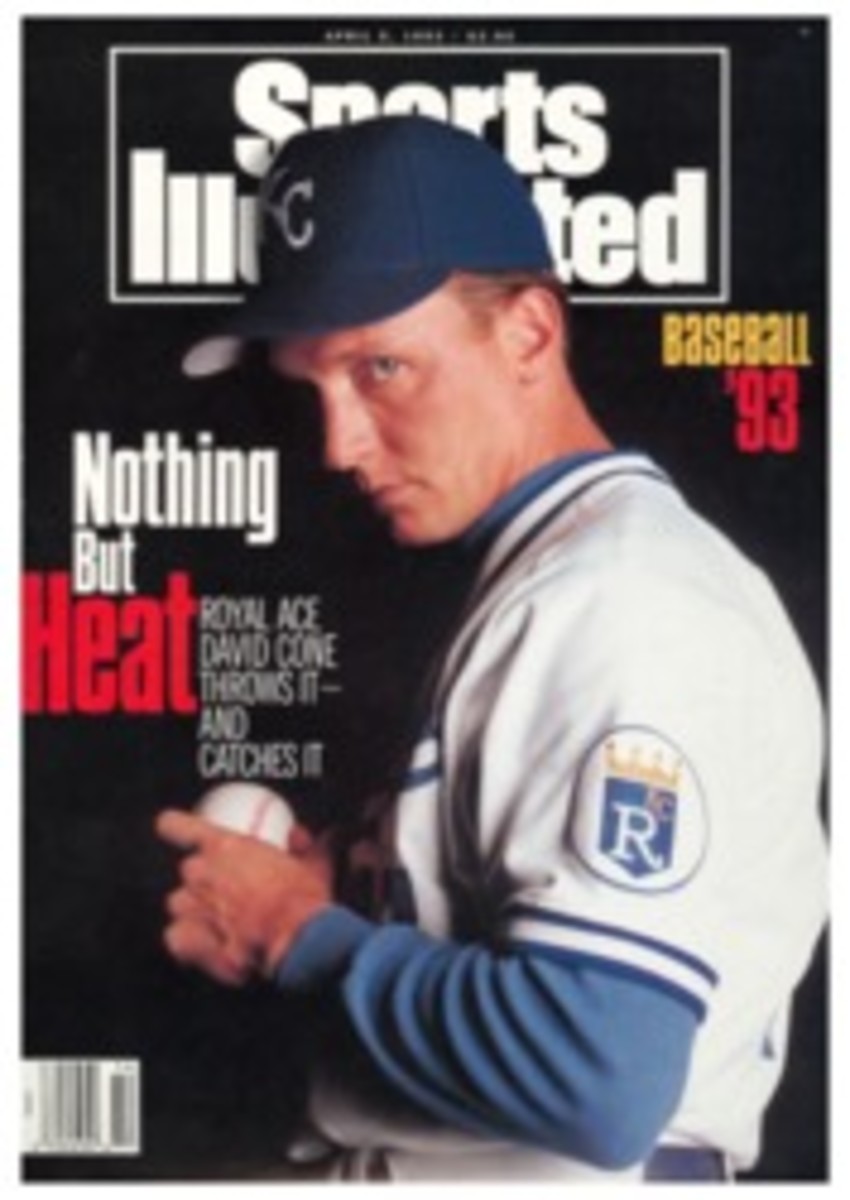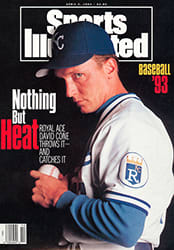
Duking It Out at the Derby
To his dying day in 1983, Herb Fisher maintained that he had been cheated out of a victory in the 1933 Kentucky Derby. That was the notorious Fighting Finish Derby, the one in which Fisher, aboard Head Play, battled with Don Meade, riding Brokers Tip, down the stretch at Churchill Downs. It was old-fashioned roughhouse race-riding at its best—or worst. When the horses crossed the line, the finish was too close to call. Since there was no film patrol or photo-finish camera in those days, the decision rested with four stewards who watched the race through binoculars from their booth atop the grandstand roof.
As Fisher told it, three of the four stewards subsequently admitted to him that Head Play, not Brokers Tip, appeared to be the winner of the 59th Derby. But the chief steward, Charles Price, overruled his colleagues and dismissed Fisher's claim of foul, declaring Brokers Tip the winner by a nose. One reason for this decision, Fisher believed, was that the naked eye always favors the inside horse—Brokers Tip, in this case. But even more important, as Fisher saw it, was that Brokers Tip was owned by the Idle Hour Stock Farm of Colonel E.R. Bradley.
"Bradley was the king of Kentucky in those days," Fisher told me in 1983 during an interview for the Louisville Courier-Journal. "Gave away hundreds of thousands to charity. No way [the stewards] weren't going to give it to him. If that had been me on his horse, I'd have won it."
But Meade, now 79 and living in Hollywood, Fla., told another story. Asked if he won the race, Meade said, "No question about it—and by more than a nose, too."
So, in a sense, the 1933 Kentucky Derby isn't finished, 60 years after it was run. After the race Fisher and Meade were so angry that it took them 32 years to shake hands and patch things up. Still, their accounts of the race that made them famous, that changed their lives and linked them forever, differed enormously.
In the absence of a photograph of the finish, the only clue as to what really happened is the most famous photograph in horse racing history. It was taken by Wallace Lowry of the Courier-Journal, who was lying on the ground, just under the inner rail, at the finish line. Because he had an old-fashioned Speed Graphic camera instead of the motor-driven 35-mm models that today's photographers use, Lowry had only one chance at a photo. Remarkably, he got it—a stark, dramatic image that shows Meade and Fisher holding on to each other as their horses thunder toward the line. The trouble is, it's impossible to tell which horse was ahead at that moment, much less which was in front at the finish.
Fisher's comment about Bradley's influence may have been more than just sour grapes. After making his fortune as a bookmaker in Hot Springs, Ark., and Memphis in the 1890s, Bradley went to Chicago and invested in the real estate market. In 1898 two things happened that changed Bradley's life: He opened the Beach Club, a resort and casino in Palm Beach, Fla.; and he was ordered by his doctor to work less and begin leading a more active life outdoors. To Bradley, a lifelong gambler, that meant trading indoor action at the casinos for outdoor action at the racetrack.
After a slow start the Beach Club became the most successful establishment of its kind in the nation—a place so posh that prices weren't printed on the dinner menu because, as Bradley reasoned, "anybody who can afford to gamble here can afford the prices of the food." In 1906 Bradley purchased the Idle Hour Stock Farm outside Lexington, Ky., and set out to breed Kentucky Derby winners.
Beginning with Bad News in 1902 the superstitious Bradley gave all his horses names that began with the letter B. In 1921 he won his first Derby with Behave Yourself, then repeated with Bubbling Over in 1926 and Burgoo King in 1932. He was Kentucky's most successful and powerful breeder of that era, as well as a dashing, daring character who didn't think twice about betting $20,000 on a horse he liked.
Going into the 1933 Derby neither Brokers Tip nor Head Play, owned by Mrs. S.B. Mason, was expected to win. The favorites were the entries owned by W.R. Coe, Ladysman and Pomponious, who finished fourth and fifth, respectively. Brokers Tip seemed to be Bradley's weakest entry in years; the colt's best race had been a third-place finish in the Cincinnati Trophy as a 2-year-old.
Head Play was a strong, ill-tempered colt who refused to go into the starting gate. He was permitted to break from outside the gate, and Fisher got him off to a running start that enabled him to take the lead after about six furlongs.
The track was so muddy that Meade kept Brokers Tip about 10 feet away from the rail. Going into the first turn he had only one horse beaten in the 13-horse field. But Meade skillfully moved through and around horses until, at the top of the stretch, only Head Play and Charley O. were ahead of him. As Fisher told it, the rider on Charley O., Charles Corbett, drew next to him and yelled, "Watch the inside!" Sure enough, along came Meade, moving Brokers Tip to the rail in going for the lead.
On that day 60 years ago, with Meade challenging on the inside, Fisher made a decision that proved to be his undoing—he moved Head Play to the left, toward Brokers Tip, hoping to intimidate Meade and shut him off. Each man, when I interviewed them at their homes in Florida 10 years ago, recounted the events of that afternoon from his point of view.
FISHER: "I just wanted to tighten up on him. I squeezed him against the fence, and he grabbed ahold of the saddlecloth. I didn't know he had ahold of me until a sixteenth of a mile from the finish."
MEADE: "He grabbed ahold of me, and we grabbed, grabbed, grabbed all through the stretch. It was the survival of the fittest. I'm not blaming him for what he did, because in those days that's what you did. It was an accepted thing."
FISHER: "I hit him across the head with my whip once or twice before the finish and once after. He switched his hold from the saddlecloth to my left shoulder and all but pulled the reins out of my hands. He was holding on to me, and I was pulling him."
MEADE: "He hit me with the whip after the finish, but not before. His reins were dangling perhaps the last sixteenth of a mile. If he'd just ridden his horse, he'd have won by two or three lengths."
As soon as he had brought Head Play back to be unsaddled, Fisher claimed foul. When the decision was announced he broke into tears. Then, back in the jockeys' room, he attacked Meade.
Although not much was made of the fight at the time, the incident was embellished over the years until it became an integral part of Derby lore. Both Fisher and Meade blamed Lowry's photograph for preserving the moment. "Had it not been for that picture," Meade says, "the whole thing would have been forgotten."
As it happened that was Fisher's only chance to win a Derby. He had one more mount, finishing sixth aboard Holl Image in 1936. However, as the years went on, Fisher came to understand that by being accorded second in the Fighting Finish Derby he was granted a unique sort of immortality. He received more attention than a lot of riders who have won the race.
"It used to be that I would walk into a bar and order a drink, only to have three sitting in front of me before I knew it," Fisher said. "Once or twice I got mad. I had a pretty good training career, and yet all people wanted to talk about was that Derby."
PHOTO
WALLACE LOWRY/COURIER-JOURNAL
Lowry's stark photo was useless in determining whether Fisher (left) or Meade had won.

